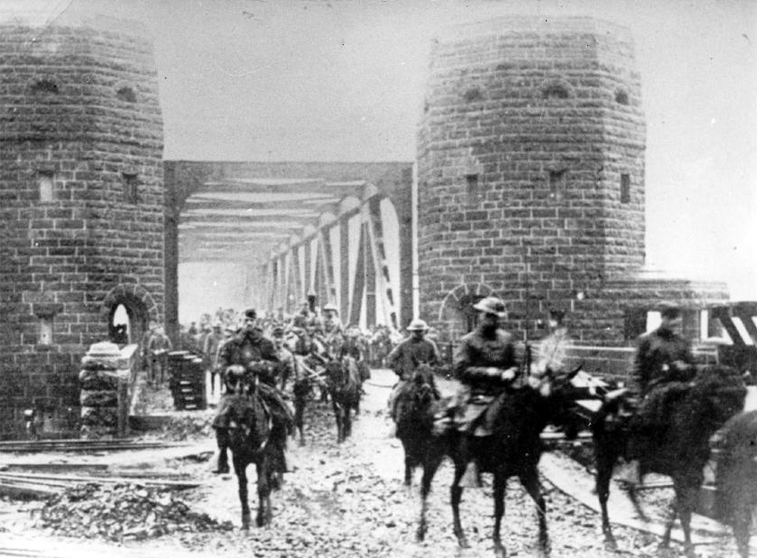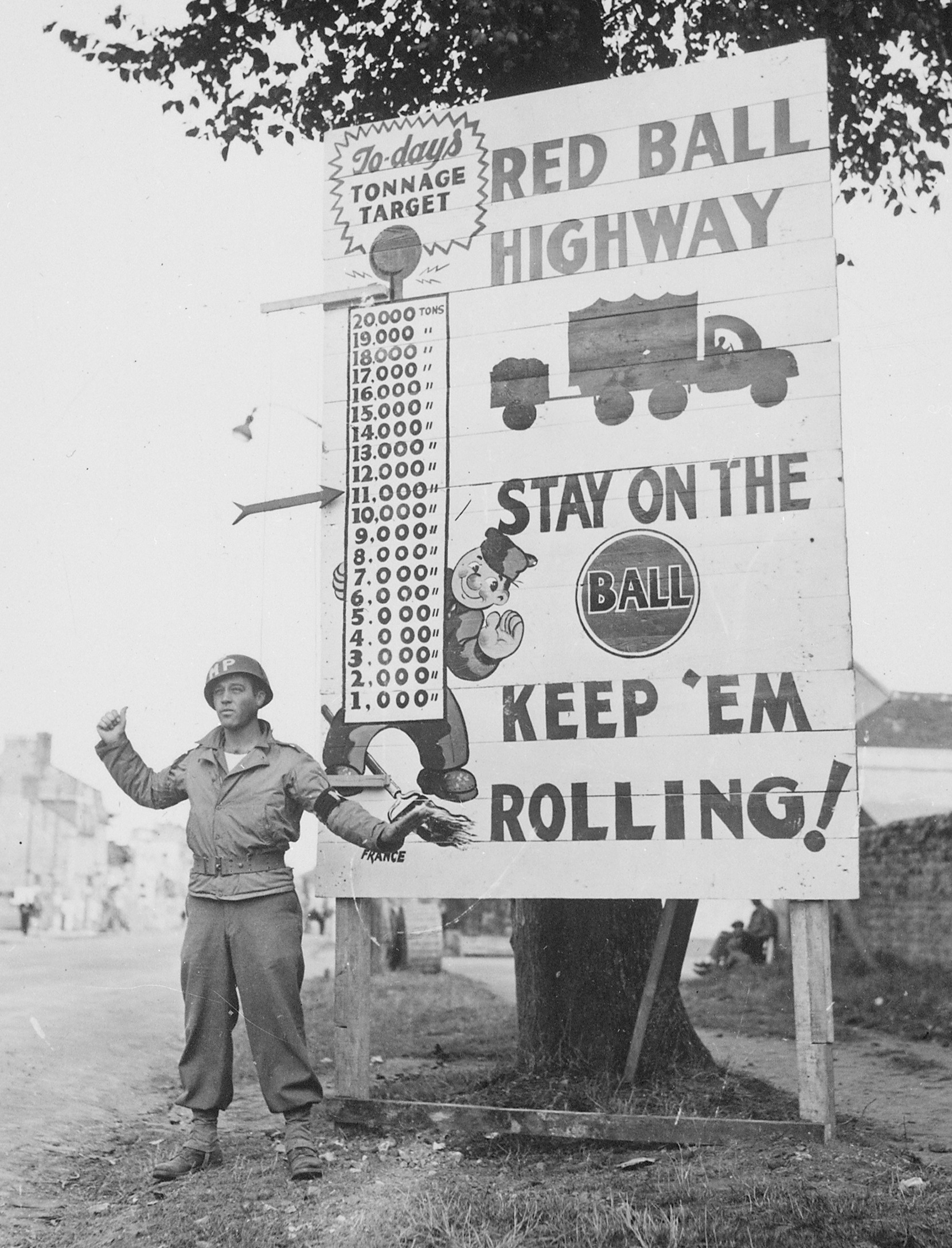|
Fusilier Battalions (Belgium)
The term fusilier battalions (french: Bataillons de fusiliers, nl, Bataljon Fusiliers) denotes 57 separate military formations which were raised in Belgium to fight alongside the Western Allies in the final months of World War II. Unlike the Free Belgian Forces which were raised in exile, the fusilier battalions were raised within Belgium after its Liberation from German occupation in September 1944. In total, 57 battalions (each numbered between 1-39 and 45-62) with a total of 53,700 men were raised between October 1944 and June 1945. Origins and creation The concept of the fusilier battalions originated in plans by the Belgian government in exile to rebuild the Belgian Army once its national territory was liberated from German occupation. In June 1943, they created a formal plan to raise 18 battalions of soldiers in Belgium once the territory was regained. The core of the new force would be six battalions of front-line infantry to augment the existing Independent Belgian Brig ... [...More Info...] [...Related Items...] OR: [Wikipedia] [Google] [Baidu] |
Battle Of Remagen
The Battle of Remagen was an 18-day battle during the Allied invasion of Germany in World War II from 7 to 25 March 1945 when American forces unexpectedly captured the Ludendorff Bridge over the Rhine intact. They were able to hold it against German opposition and build additional temporary crossings. The presence of a bridgehead across the Rhine advanced by three weeks the Western Allies' planned crossing of the Rhine into the German interior. After capturing the Siegfried Line, the 9th Armored Division of the U.S. First Army had advanced unexpectedly quickly towards the Rhine. They were very surprised to see one of the last bridges across the Rhine still standing. The Germans had wired the bridge with about of demolition charges. When they tried to blow it up, only a portion of the explosives detonated. U.S. forces captured the bridge and rapidly expanded their first bridgehead across the Rhine, two weeks before Field Marshal Bernard Montgomery's meticulously planned Operati ... [...More Info...] [...Related Items...] OR: [Wikipedia] [Google] [Baidu] |
Operation Market Garden
Operation Market Garden was an Allied military operation during the Second World War fought in the Netherlands from 17 to 27 September 1944. Its objective was to create a salient into German territory with a bridgehead over the River Rhine, creating an Allied invasion route into northern Germany. This was to be achieved by two sub-operations: seizing nine bridges with combined U.S. and British airborne forces (Market) followed by land forces swiftly following over the bridges (Garden). The airborne operation was planned and undertaken by the First Allied Airborne Army with the land operation by XXX Corps of the British Second Army.The Battle for the Rhine 1944 by Robin Neillands, Chapter 4 The Road to Arnhem Although the largest airborne operation of the war up to that point, Market Garden's ultimate outcome remains debated: The operation succeeded in liberating the Dutch cities of Eindhoven and Nijmegen along with many towns, and limited V-2 rocket launching sites. How ... [...More Info...] [...Related Items...] OR: [Wikipedia] [Google] [Baidu] |
Military Units And Formations Disestablished In 1945
A military, also known collectively as armed forces, is a heavily armed, highly organized force primarily intended for warfare. It is typically authorized and maintained by a sovereign state, with its members identifiable by their distinct military uniform. It may consist of one or more military branches such as an army, navy, air force, space force, marines, or coast guard. The main task of the military is usually defined as defence of the state and its interests against external armed threats. In broad usage, the terms ''armed forces'' and ''military'' are often treated as synonymous, although in technical usage a distinction is sometimes made in which a country's armed forces may include both its military and other paramilitary forces. There are various forms of irregular military forces, not belonging to a recognized state; though they share many attributes with regular military forces, they are less often referred to as simply ''military''. A nation's military may ... [...More Info...] [...Related Items...] OR: [Wikipedia] [Google] [Baidu] |
Czechoslovakia
, rue, Чеськословеньско, , yi, טשעכאסלאוואקיי, , common_name = Czechoslovakia , life_span = 1918–19391945–1992 , p1 = Austria-Hungary , image_p1 = , s1 = Czech Republic , flag_s1 = Flag of the Czech Republic.svg , s2 = Slovakia , flag_s2 = Flag of Slovakia.svg , image_flag = Flag of Czechoslovakia.svg , flag = Flag of Czechoslovakia , flag_type = Flag(1920–1992) , flag_border = Flag of Czechoslovakia , image_coat = Middle coat of arms of Czechoslovakia.svg , symbol_type = Middle coat of arms(1918–1938 and 1945–1961) , image_map = Czechoslovakia location map.svg , image_map_caption = Czechoslovakia during the interwar period and the Cold War , national_motto = , anthems = ... [...More Info...] [...Related Items...] OR: [Wikipedia] [Google] [Baidu] |
Plzeň
Plzeň (; German and English: Pilsen, in German ) is a city in the Czech Republic. About west of Prague in western Bohemia, it is the Statutory city (Czech Republic), fourth most populous city in the Czech Republic with about 169,000 inhabitants. The city is known worldwide for Pilsner beer, created by Bavarian brewer Josef Groll in the city in 1842. Administrative division Plzeň is divided into ten boroughs, which are further divided into 25 administrative parts (in brackets): *Plzeň 1-Bolevec (Bolevec and Severní Předměstí) *Plzeň 2-Slovany (Božkov, Černice (partly), Doudlevce (partly), Hradiště, Koterov, Lobzy (partly) and Východní Předměstí (partly)) *Plzeň 3-Bory (Doudlevce (partly), Jižní Předměstí, Litice (partly), Nová Hospoda, Radobyčice, Skvrňany, Valcha, Vnitřní Město and Východní Předměstí (partly)) *Plzeň 4-Doubravka (Bukovec, Červený Hrádek, Doubravka, Lobzy (partly), Újezd and Východní Předměstí (partly)) *Plzeň 5-K� ... [...More Info...] [...Related Items...] OR: [Wikipedia] [Google] [Baidu] |
Rhine
The Rhine ; french: Rhin ; nl, Rijn ; wa, Rén ; li, Rien; rm, label=Sursilvan, Rein, rm, label=Sutsilvan and Surmiran, Ragn, rm, label=Rumantsch Grischun, Vallader and Puter, Rain; it, Reno ; gsw, Rhi(n), including in Alsatian dialect, Alsatian and Low Alemannic German; ksh, label=Ripuarian language, Ripuarian and Low Franconian languages, Low Franconian, Rhing; la, Rhenus ; hu, Rajna . is one of the major List of rivers of Europe, European rivers. The river begins in the Swiss canton of Graubünden in the southeastern Swiss Alps. It forms part of the Swiss-Liechtenstein, Swiss-Austrian border, Swiss-Austrian, Swiss-German border, Swiss-German borders. After that the Rhine defines much of the Franco-German border, after which it flows in a mostly northerly direction through the German Rhineland. Finally in Germany the Rhine turns into a predominantly westerly direction and flows into the Netherlands where it eventually empties into the North Sea. It drains an area of 9,9 ... [...More Info...] [...Related Items...] OR: [Wikipedia] [Google] [Baidu] |
Netherlands
) , anthem = ( en, "William of Nassau") , image_map = , map_caption = , subdivision_type = Sovereign state , subdivision_name = Kingdom of the Netherlands , established_title = Before independence , established_date = Spanish Netherlands , established_title2 = Act of Abjuration , established_date2 = 26 July 1581 , established_title3 = Peace of Münster , established_date3 = 30 January 1648 , established_title4 = Kingdom established , established_date4 = 16 March 1815 , established_title5 = Liberation Day (Netherlands), Liberation Day , established_date5 = 5 May 1945 , established_title6 = Charter for the Kingdom of the Netherlands, Kingdom Charter , established_date6 = 15 December 1954 , established_title7 = Dissolution of the Netherlands Antilles, Caribbean reorganisation , established_date7 = 10 October 2010 , official_languages = Dutch language, Dutch , languages_type = Regional languages , languages_sub = yes , languages = , languages2_type = Reco ... [...More Info...] [...Related Items...] OR: [Wikipedia] [Google] [Baidu] |
National Royalist Movement
The National Royalist Movement (french: Mouvement national royaliste or MNR, nl, Nationale Koninklijke Beweging, NKB) was a group within the Belgian Resistance in German-occupied Belgium during World War II. It was active chiefly in Brussels and Flanders and was the most politically right-wing of the major Belgian resistance groups. Background The MNR was founded in German-occupied Belgium soon after the Belgian defeat of May 1940 by former members of the far-right Catholic, authoritarian Rexist Party. As an organisation, it had a strongly nationalist stance and was led by Eugène Mertens de Wilmars, a former admirer of the fascist, Leon Degrelle. The MNR wanted Belgium to become an authoritarian dictatorship under the rule of King Leopold III. In July 1941, the German occupation authorities became suspicious of the MNR and it was forced into hiding. After the arrest of Mertens de Wilmars in May 1942, it became overtly anti-German and began to engage in resistance activit ... [...More Info...] [...Related Items...] OR: [Wikipedia] [Google] [Baidu] |
Secret Army (Belgium)
The Secret Army (french: Armée Secrète or AS, nl, Geheim Leger, GL) was a faction within the Belgian Resistance active during the German occupation of Belgium during World War II. Founded in August 1940 as the Belgian Legion, the Secret Army changed its name on a number of occasions during its existence, adopting its final appellation in June 1944. It was the largest resistance group active in the country. The Secret Army incorporated many former officers from the defeated Belgian Army and, politically, was dominated by right-wing conservatives and royalists. Though relations were sometimes strained, the Secret Army enjoyed the closest relations of any large resistance movement with the Belgian government in exile. Foundation The origin of the Secret Army can be traced back to shortly after the Belgian surrender after the German invasion of 10–28 May 1940. A number of career officers from the defeated Belgian Army joined together to create the first small resistance organ ... [...More Info...] [...Related Items...] OR: [Wikipedia] [Google] [Baidu] |
Belgian Resistance
The Belgian Resistance (french: Résistance belge, nl, Belgisch verzet) collectively refers to the resistance movements opposed to the German occupation of Belgium during World War II. Within Belgium, resistance was fragmented between many separate organizations, divided by region and political stances. The resistance included both men and women from both Walloon and Flemish parts of the country. Aside from sabotage of military infrastructure in the country and assassinations of collaborators, these groups also published large numbers of underground newspapers, gathered intelligence and maintained various escape networks that helped Allied airmen trapped behind enemy lines escape from German-occupied Europe. During the war, it is estimated that approximately five percent of the national population were involved in some form of resistance activity, while some estimates put the number of resistance members killed at over 19,000; roughly 25 percent of its "active" members.Henri B ... [...More Info...] [...Related Items...] OR: [Wikipedia] [Google] [Baidu] |


.jpg)


